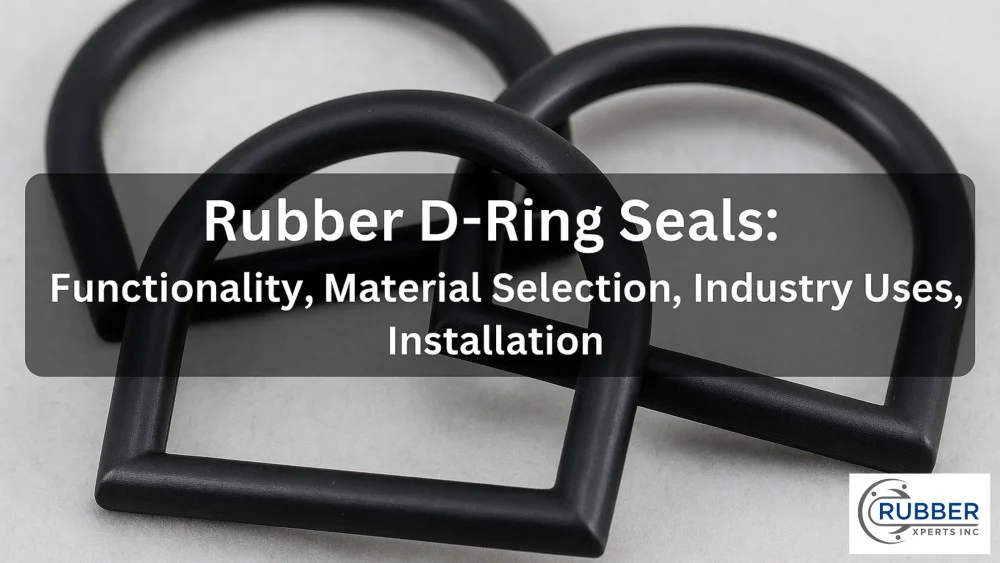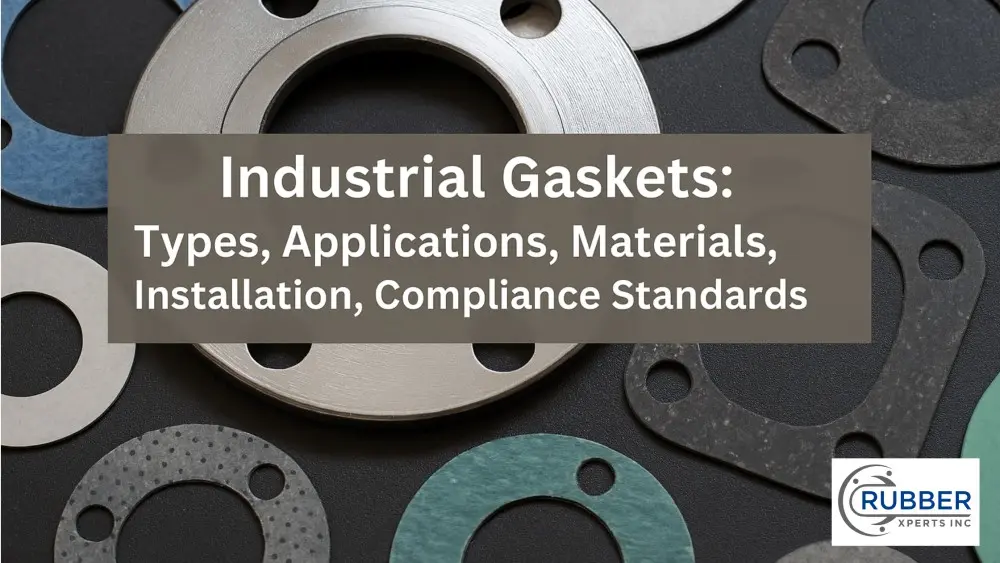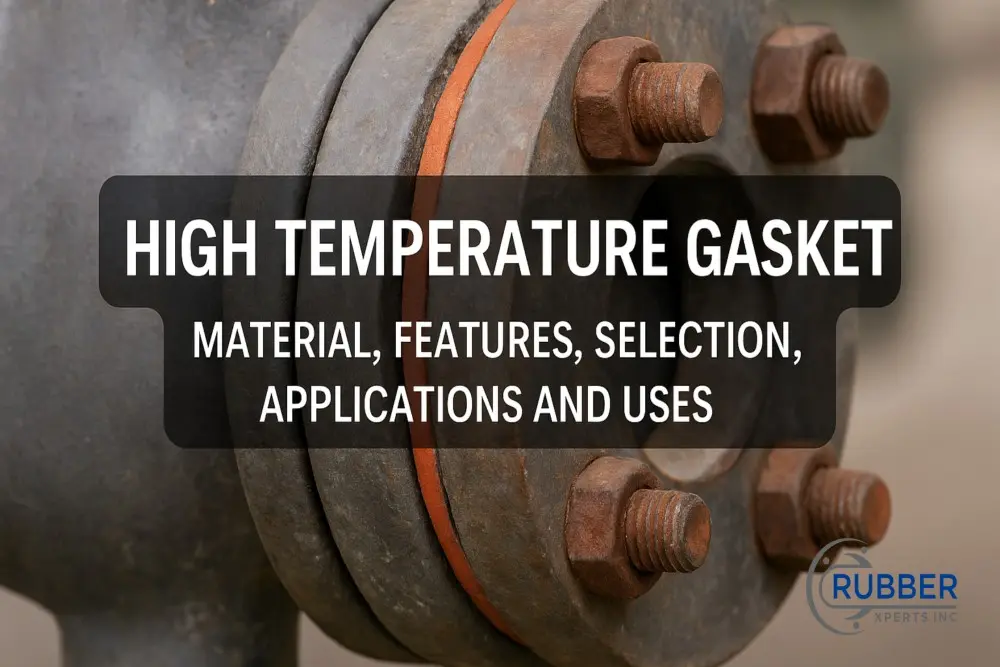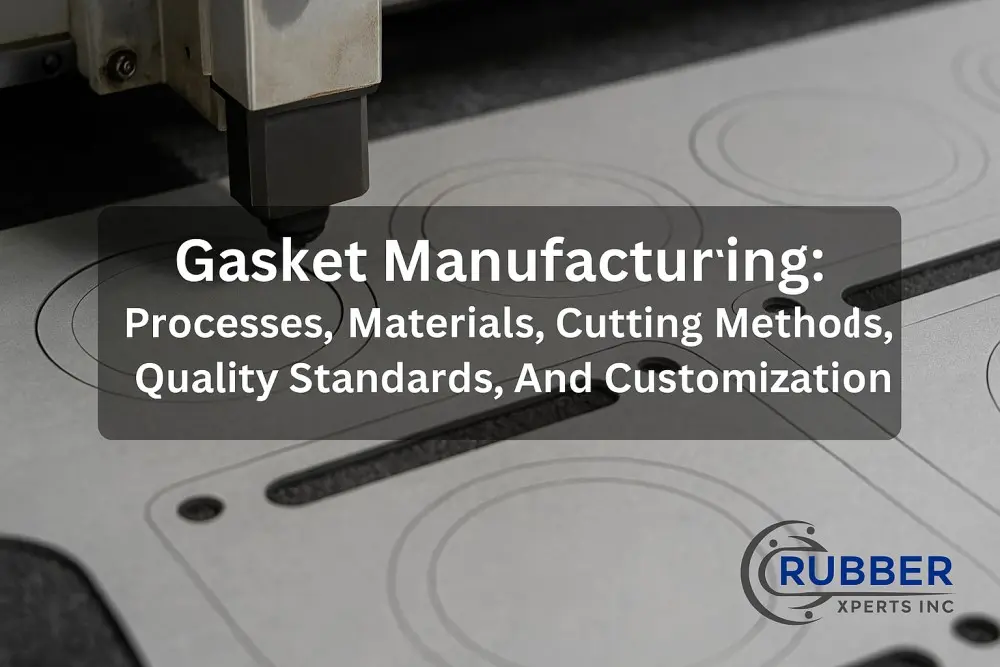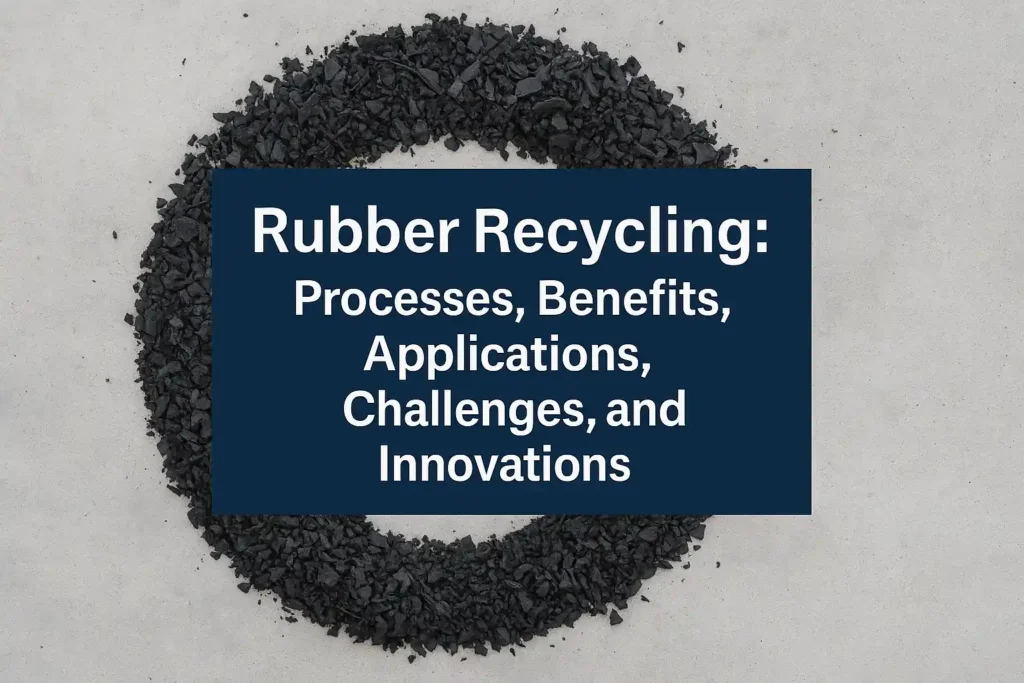Rubber insulation, derived from elastomer materials, safeguards systems from environmental factors and ensures optimal performance across diverse industries. It offers a reliable barrier against heat, electricity, moisture, and sound. Its versatility and adaptability make it indispensable in applications where performance and protection are paramount. According to a report by Precedence Research, the global silicone rubber insulation coating market was valued at around USD 3.93 billion in 2024. It is expected to grow to around USD 6.73 billion by 2034.
Rubber insulation includes thermal, electrical, moisture, and acoustic insulation. Each type is designed to address specific industrial needs, from HVAC systems requiring thermal efficiency to electrical setups demanding high dielectric properties. Rubber-based technology, including closed-cell and open-cell structures, provides customized solutions for specialized applications.
The properties of rubber insulation, such as flexibility, durability, and resistance to extreme conditions, make it a preferred choice across industries. As a flexible material, it conforms to complex geometries, while its durable insulation ensures longevity in challenging environments. The sustainable insulation properties of rubber align with the growing need for eco-friendly and energy-efficient solutions in modern industries.
Rubber insulation finds applications in HVAC systems, automotive, construction, and aerospace. Its ability to withstand varying conditions makes it a key material in industrial machinery, pipe and duct insulation, and soundproofing solutions. The adaptability of elastomer materials ensures seamless integration into energy-efficient and high-performance systems.
The advantages of rubber insulation lie in its superior thermal and electrical insulation capabilities, energy efficiency, and cost-effectiveness. Its durability and ease of installation provide long-term benefits, while its sustainable insulation features reduce environmental impact. Rubber insulation continues to be a trusted choice for industries seeking reliable and innovative solutions to meet their insulation requirements.
What is Rubber Insulation?
Rubber insulation is the use of rubber compounds as insulating materials designed to provide thermal resistance, electrical resistance, and environmental protection. It is widely utilized in industries that require maintaining temperature control, preventing electrical conduction, and conserving energy.
Rubber insulation is integral in applications ranging from industrial machinery to construction and electronics. It complies with stringent insulation standards and offers reliable, long-lasting solutions. In industrial sealing, insulated rubbers protect equipment and processes by mitigating heat transfer, preventing electrical faults, and ensuring operational safety.
Rubber insulation is a barrier that maintains system integrity even in extreme conditions, such as high temperatures or exposure to electrical currents. For example, rubber seals with insulating properties in industrial machinery prevent overheating and electrical surges, promoting energy conservation and protecting sensitive components. Thus, rubber insulation is a cornerstone for the power generation, automotive, and electronics industries.
The unique characteristics of rubber insulation make it indispensable for creating effective seals in demanding applications. Its thermal resistance ensures that it withstands prolonged exposure to high temperatures without degradation, while its electrical resistance protects against conductive hazards, guaranteeing safety in sensitive environments.
Flexible insulators adapt to various shapes and surfaces, providing a secure and customized fit. Rubber insulation materials include additives that enhance durability, weather resistance, and chemical stability, making them suitable for harsh industrial settings where performance and reliability are paramount.
What are the Different Types of Rubber Insulation?
The different types of rubber insulation are thermal insulation, electrical insulation, andacoustic insulation, each catering to distinct industrial needs by offering protection and performance benefits. Advanced materials like EPDM rubber, neoprene, and foam rubber further support these insulation types, enhancing their effectiveness in various applications. Rubber insulation maintains efficiency, safety, and durability across the construction, automotive, and electronics industries by addressing challenges like heat transfer, electrical conductivity, and noise reduction.
Thermal Insulation
Thermal insulation in rubber products minimizes heat transfer to maintain controlled temperatures in industrial systems. This type of insulation uses closed-cell rubber insulation, which traps air within its structure to reduce thermal conductivity.
A study by Kader MMA et al. 2012, titled “Evaluation of thermal insulation and mechanical properties of waste rubber/natural rubber composite,” found that incorporating 600 phr (parts per hundred rubber) of waste rubber as a loading material achieves optimal thermal insulation performance. This concentration improves mechanical properties while significantly reducing the cost of building materials to 82% of the cost of natural rubber (NR).
EPDM rubber insulation, for example, is widely used because it is resistant to high temperatures and UV exposure. Thermal insulation, on the other hand, benefits applications such as HVAC systems, pipelines, and automotive components by conserving energy and preventing overheating.
Electrical Insulation
Electrical insulation in rubber is designed to prevent the flow of electricity, ensuring safety and performance in electrical and electronic systems. Silicone rubber and neoprene rubber are commonly used due to their excellent dielectric properties and resistance to environmental factors.
A study by Junian S et al., 2019, titled “Natural Rubber as Electrical Insulator: A Review,” highlights that blending natural rubber with synthetic rubber enhances its mechanical and physical properties, making it more suitable and cost-effective for electrical insulation applications. Electrical insulation forms a non-conductive barrier that protects against short circuits and electrical shocks. Its primary benefit is improved safety and reliability in power cables, transformers, and sensitive electronic equipment.
Acoustic Insulation
Acoustic insulation is a rubber that absorbs and dampens sound vibrations, reducing noise transmission in industrial and commercial environments. Foam rubber, particularly open-cell rubber insulation, is used for its sound-absorbing properties. This type of insulation disrupts the path of sound waves and converts them into heat energy, effectively reducing noise levels.
Its benefit lies in creating quieter workspaces and improving the acoustic performance of machinery and buildings. A study by Asdrubali F et al. 2008, titled “Sound absorbing properties of materials made of rubber crumbs,” demonstrates that rubber crumbs from end-of-life tires, optimized with specific grain sizes, thicknesses, and compaction ratios, exhibit excellent sound absorption properties, particularly for acoustic insulation.
Moisture Insulation
Rubber moisture insulation prevents water ingress, ensuring the longevity and efficiency of systems exposed to humid or wet conditions. Closed-cell rubber insulation is highly effective, as it resists water absorption and maintains its integrity in damp environments. Neoprene rubber is preferred for its waterproof and weather-resistant properties.
Moisture insulation’s key benefit is its ability to prevent corrosion, preserve equipment, and maintain the functionality of seals and enclosures. Research by Zhu X et al. 2021, “Moisture Absorption Characteristics of Nanoparticle-Doped Silicone Rubber and Its Influence Mechanism on Electrical Properties,” emphasizes this importance, showing that moisture absorption in nanoparticle-doped silicone rubber (SiR) degrades electrical properties like breakdown strength and space charge inhibition.
Chemical-Resistant Insulation
Chemical-resistant insulation is designed to withstand exposure to harsh chemicals without degrading or losing performance. Synthetic rubbers like EPDM and neoprene excel in this category, offering resistance to oils, acids, and solvents. This type of insulation includes rubber compounds customized for chemical stability, making it ideal for industries like chemical processing and pharmaceuticals.
Chemical-resistant insulation is beneficial because it maintains durability and ensures safety in technical applications requiring robust protection against corrosive substances. A study by Rostami-Tapeh-Esmaeil et al. 2021, “Chemistry, Processing, Properties, and Applications of Rubber Foams,” underlines how the unique properties of the Si-O-Si bond in silicone rubber, such as its high bond energy, flexibility, and stability against chemicals, UV, and ozone, make it an excellent material for chemical rubber-resistant insulation.
What are the Properties of Rubber Insulation?
The properties of rubber insulation are flexibility, durability, and dielectric strength, which collectively make it a versatile and effective choice for industrial and commercial applications. These attributes ensure rubber insulation performs optimally under various conditions, providing superior protection and reliability.
The properties of rubber insulation are as follows:
Flexibility
Flexibility is the ability of rubber insulation to bend and adapt without cracking or losing structural integrity. This property is achieved due to the molecular structure of rubber, which allows for stretching and compressing while maintaining shape. Flexible rubber insulation works by conforming to irregular surfaces and tight spaces, enabling effective sealing and coverage.
Flexibility benefits from its adaptability to complex installations, making it ideal for eco-friendly insulation and applications in industries requiring tight tolerances. This characteristic also allows for easier installation around irregular shapes and surfaces, enhancing both efficiency and performance.
Durability
Durability is the long-lasting nature of rubber insulation, which withstands wear and tear, harsh environments, and mechanical stress. Its anti-corrosive characteristics and abrasion resistance come from its robust molecular structure and added compounds. Durable rubber insulation maintains structural integrity over time, even in extreme conditions.
This property ensures a low-maintenance solution with improved longevity, making it suitable for environments requiring heat resistance and fire retardancy. Its resistance to environmental factors like UV rays and ozone further contributes to its durability in demanding applications.
Dielectric Strength
Dielectric strength is the ability of rubber insulation to resist electrical breakdown under high voltage. This property arises from its low concentration of free electrons, which prevents the conduction of electricity. Rubber insulation with high dielectric strength safely isolates electrical components and prevents current leakage.
This property enhances electrical safety, making it necessary for applications requiring reliable electrical properties, such as power transmission and electronics. Its dielectric strength helps prevent short circuits and electrical failures, ensuring long-term stability and safety in critical systems.
Thermal Resistance
Thermal resistance is the ability of rubber insulation to minimize heat transfer and maintain temperature control in various applications. Low thermal conductivity and technological additives enable this property. Thermal-resistant rubber insulation reduces energy loss and protects systems from heat damage.
Its benefits include energy conservation and improved system efficiency, making it a preferred choice for heat resistance in industrial and commercial settings. Moreover, its thermal resistance helps maintain optimal operating conditions, reducing the need for frequent maintenance and lowering energy costs over time.
Moisture Resistance
Moisture resistance refers to the ability of rubber insulation to repel water and prevent water vapor permeability. Closed-cell structures and hydrophobic additives achieve this characteristic. Moisture-resistant rubber insulation prevents corrosion, maintains insulation performance, and protects equipment from water-related damage.
The benefit of this property is its reliability in damp environments, which ensures durability and safety in indoor and outdoor applications. It also helps prevent moisture-related damage, preserving the integrity of seals and other components in high-humidity settings.
What are the Applications of Rubber Insulation?
The applications of rubber insulation include electrical, thermal, and automotive uses, as well as in the construction and aerospace industries. Rubber insulation protects sensitive systems from environmental factors, improves energy efficiency, and ensures safety. Rubber insulation offers versatile solutions. Its adaptability to different sectors makes it an indispensable material for both residential and industrial applications, contributing to enhanced system performance and longevity.
The applications of rubber insulation are as follows:
Electrical Applications
Rubber insulation is widely used in electrical applications due to its excellent dielectric properties, which prevent electrical conductivity. It is commonly used for electrical wiring and cables, protecting them from environmental factors and mechanical damage. Insulated rubber products like cables and wire coatings ensure the safety and reliability of electrical systems, especially in high-voltage environments. Rubber insulation also prevents short circuits, improves electrical safety, and improves the longevity of electrical wiring systems.
Thermal Applications
In thermal applications, rubber insulation provides thermal resistance in systems like HVAC units and refrigeration pipes. Reducing heat transfer contributes to maintaining energy efficiency in residential and industrial settings. Rubber insulation’s role in pipe and duct insulation ensures minimal energy loss, thus reducing operational costs.
The benefits of rubber thermal insulation include excellent heat protection and durability, making it ideal for systems exposed to fluctuating temperatures or harsh environments. This type of insulation effectively reduces heat transfer, ensuring that equipment and pipes maintain optimal operating temperatures while minimizing energy loss. It improves the longevity of systems by protecting thermal expansion and contraction, which cause wear and tear over time.
Automotive Industry
Rubber insulation is necessary in the automotive industry for noise reduction, vibration dampening, and heat shielding. Products such as automotive insulation, seals, and gaskets are made from rubber materials to improve comfort and prevent heat loss. These rubber components also help protect the vehicle’s electrical wiring and enhance the durability of automotive systems.
Rubber insulation improves performance and energy efficiency and protects sensitive automotive parts from extreme conditions. It withstands high temperatures, moisture, and vibrations, helping ensure the longevity and reliability of components such as rubber gaskets, wiring, and exhaust systems. Its superior thermal and electrical resistance reduces energy loss and enhances the vehicle’s overall efficiency.
Construction
Rubber insulation is commonly used in the construction industry to soundproof and insulate pipes and ensure energy-efficient buildings. It is applied in both residential and commercial buildings to insulate pipes, ducts, and HVAC systems. Rubber’s ability to reduce noise and prevent temperature fluctuations makes it an important material for modern construction projects.
Rubber insulation has many benefits in the construction industry, including enhanced comfort, energy conservation, and the ability to maintain the integrity of building systems, particularly in areas subject to temperature extremes. It helps regulate indoor temperatures by minimizing heat loss or gain, improving energy efficiency, and reducing the need for excessive heating or cooling. This contributes to lower energy bills and a more sustainable building.
Aerospace Applications
In aerospace, rubber insulation is used for its thermal resistance and ability to handle extreme conditions. It is applied to various aircraft components, including electrical wiring, fuel lines, and engine compartments, to ensure safety and reliability. Rubber insulating properties help maintain the systems’ efficiency while protecting sensitive components from vibrations and temperature fluctuations.
The primary benefit of rubber insulation in aerospace applications is its ability to protect demanding systems from heat, vibration, and electrical interference, ensuring the safety and optimal performance of the aircraft.
What are the Advantages of Rubber Insulation?
The advantages of rubber insulation are its exceptional thermal conductivity, fire resistance, and vibration reduction, along with its ability to deliver long service life in various applications. These qualities make rubber insulation a cost-effective, energy-efficient, and durable solution for industrial, commercial, and residential needs.
The Advantages of Rubber Insulation are as follows:
Thermal Conductivity
Rubber insulation offers high thermal efficiency by minimizing heat transfer, making it ideal for maintaining stable temperatures in HVAC systems, refrigeration pipes, and industrial machinery. The closed-cell structure of many rubber-based insulation materials reduces thermal conductivity, conserving energy and cutting operational costs.
For example, EPDM rubber is used in pipe and duct insulation for its ability to withstand extreme temperature fluctuations while retaining its insulating properties. According to a report by the International Energy Agency (IEA), effective thermal insulation reduces energy consumption in HVAC systems by up to 30%, stressing the energy-saving benefits of rubber insulation.
Fire Resistance
Fire-resistant rubber insulation provides a required layer of protection by resisting ignition and slowing the spread of flames. This property is particularly important in construction and automotive applications where fire safety is paramount. Neoprene rubber, commonly used in building insulation, is known for its excellent fire retardancy and durability.
Rubber insulation ensures compliance with safety regulations while improving structures’ overall resilience. A study published in the Fire Safety Journal emphasizes that fire-resistant materials like neoprene reduce fire-related damages by up to 50%, making them a reliable choice for energy-efficient buildings.
Vibration Reduction
Rubber insulation absorbs and dampens vibrations effectively, protecting sensitive equipment and systems from mechanical wear and tear. This makes it invaluable in automotive insulation, industrial machinery, and marine applications. Foam rubber gaskets, for example, are frequently used to isolate vibrations in engines and compressors, ensuring smooth operation and extending their lifespan.
The anti-corrosive characteristics of rubber also contribute to its performance under high-vibration conditions, making it an adaptable material for industries requiring low maintenance and long-lasting performance.
Long Service Life
Rubber insulation is renowned for its durability and resistance to environmental factors such as moisture, UV radiation, and ozone, ensuring long-term performance. Its lightweight material and non-toxic components make it easy to install while requiring minimal upkeep over time.
Silicone rubber, used in electrical wiring insulation, is celebrated for its long service life and ability to maintain stability in extreme conditions. According to Construction Review Online, silicone rubber insulation has been shown to last more than 20 years in harsh environments, offering significant cost-effective insulation and low maintenance benefits.
Are There any Disadvantages of Rubber Insulation?
Yes, there are a few disadvantages of rubber insulation, like higher upfront costs compared to other materials, technical equipment, and expertise required for the curing and application process, which add complexity to the installation. Exposure to extreme environmental conditions sometimes shortens its lifespan, requiring frequent maintenance or replacement.
The disadvantages of rubber insulation are as follows:
- Application & Curing: Rubber insulation requires technical processes, such as vulcanization or curing, to achieve its desired properties. These processes are time-consuming and demand precise control over temperature, pressure, and timing. Improper curing results in compromised performance, reducing the insulation’s effectiveness and longevity. This complexity makes rubber insulation less appealing for projects requiring rapid deployment or simpler solutions.
- Higher Cost: Compared to other insulating materials, rubber insulation has a higher upfront cost due to its advanced manufacturing techniques and high-quality rubber compounds. This expense is a deterrent, particularly for budget-sensitive applications. While the long-term energy-saving benefits and durability of rubber insulation offset the initial investment, the higher cost limits its use in cost-constrained projects.
- Shorter Lifespan: Under extreme environmental conditions, such as constant UV exposure or prolonged contact with aggressive chemicals, certain types of rubber insulation degrade faster than alternative materials. Factors like material fatigue and loss of elasticity reduce its lifespan, making it less suitable for environments where prolonged stability is necessary. This limitation necessitates more frequent maintenance or replacement, impacting overall cost-effectiveness.
- Difficult Installation: The flexibility and adaptability of rubber insulation, while beneficial in many scenarios, also make installation challenging in highly irregular or confined spaces. A perfect fit requires skilled labor, additional tools, or adhesive materials to ensure proper sealing and insulation. Incorrect installation leads to gaps or weak points, compromising thermal or moisture resistance and eventually diminishing the system’s efficiency.
Why Choose Rubber Insulation?
Choose rubber insulation because it offers unparalleled advantages in residential and industrial applications. Its superior thermal and electrical resistance ensures optimal energy conservation while protecting systems from overheating and electrical faults. Due to its long-lasting performance and minimal maintenance requirements, rubber insulation is also cost-effective, making it ideal for various industries.
Its flexibility allows easy installation around pipes, ducts, and other irregular surfaces, reducing waste and ensuring a snug fit. Rubber insulation is resistant to moisture, fire, and harsh environmental conditions, providing durability and safety in demanding applications. These qualities make it versatile for HVAC systems, automotive insulation, and energy-efficient buildings.
Is Rubber Insulation Flammable?
No, rubber insulation is not flammable when designed for specific applications. Many rubber insulation products are treated with fire-retardant additives or made using inherently fire-resistant materials such as neoprene or silicone rubber. These materials meet stringent insulation standards, ensuring safety in environments prone to high temperatures or fire hazards.
The non-flammable nature of rubber insulation helps protect demanding systems, such as electrical wiring or industrial machinery, from fire-related damage. This property makes it a preferred choice in applications like construction and aerospace, where fire resistance is required. It is important to select the right type of rubber insulation that complies with fire safety regulations for your specific needs.
What are the Most Common Insulated Rubber Products?
The most common insulated rubber products are Rubber O-rings, Rubber Seals, and Rubber Hoses. These products are integral to various industries due to their durability, flexibility, and ability to provide effective insulation against heat, moisture, and electrical currents.
Rubber insulation improves the functionality of these products by ensuring they perform efficiently in demanding environments. These products are indispensable in industrial, automotive, and construction applications, from maintaining secure seals to enabling efficient fluid transfer.
The most common insulated rubber products are as follows:
- Rubber O-rings: Rubber O-rings are circular seals that prevent leaks in static and dynamic applications. Their insulating properties improve their ability to withstand extreme temperatures and chemical exposure, making them ideal for sealing engines, pipelines, and industrial equipment. With their versatility and reliability, Rubber O-rings are necessary for maintaining operational efficiency.
- Rubber Seals: Rubber seals close gaps and prevent moisture, dust, or other contaminants from ingressing into mechanical assemblies. Their insulation properties make them suitable for applications requiring thermal resistance and protection against environmental elements, such as automotive door rubber seals and HVAC systems.
- Rubber Hoses: Rubber hoses are flexible tubes that transfer liquids or gases. Insulated rubber hoses, made with materials like neoprene or silicone rubber, provide superior heat protection and durability in high-pressure and high-temperature environments. These rubber hoses are commonly used in automotive cooling systems, industrial machinery, and HVAC applications.
Can We Make Insulated Rubbers from Eco-Friendly Materials?
Yes, insulated rubbers can be made from eco-friendly materials. Modern advancements in rubber technology have enabled the use of sustainable sources like natural rubber derived from Hevea brasiliensis trees, along with bio-based additives and fillers. Recycled rubber from end-of-life tires and other products are repurposed to produce insulating materials.
These eco-friendly rubbers reduce environmental impact and maintain high-performance standards, such as excellent thermal resistance and durability. They suit various industries, including automotive and construction, and align with global sustainability goals.
Is Latex Rubber a Good Insulator?
Yes, latex rubber is a good insulator. Its molecular structure lacks free electrons, giving it high electrical resistance. This makes latex rubber ideal for applications requiring dielectric properties, such as gloves for electrical workers and protective coatings for wiring systems.
Latex rubber exhibits flexibility and durability, contributing to its insulator efficiency in static and dynamic conditions. However, it does not withstand extreme temperatures as effectively as synthetic rubber alternatives, so it is best suited for low to moderate-intensity insulation applications.
Where to Get High-Quality Insulated Rubber?
Get high-quality insulated rubber from trusted suppliers like RubberXperts. They offer a wide range of premium rubber products that meet industry-specific needs, including rubber O-rings, seals, and hoses. Manufacturers focus on durability, performance, and customization and ensure their products adhere to stringent quality standards.
Whether you need thermal, electrical, or moisture insulation solutions, manufacturers like RubberXperts provide reliable, long-lasting products that deliver exceptional value for your applications.

